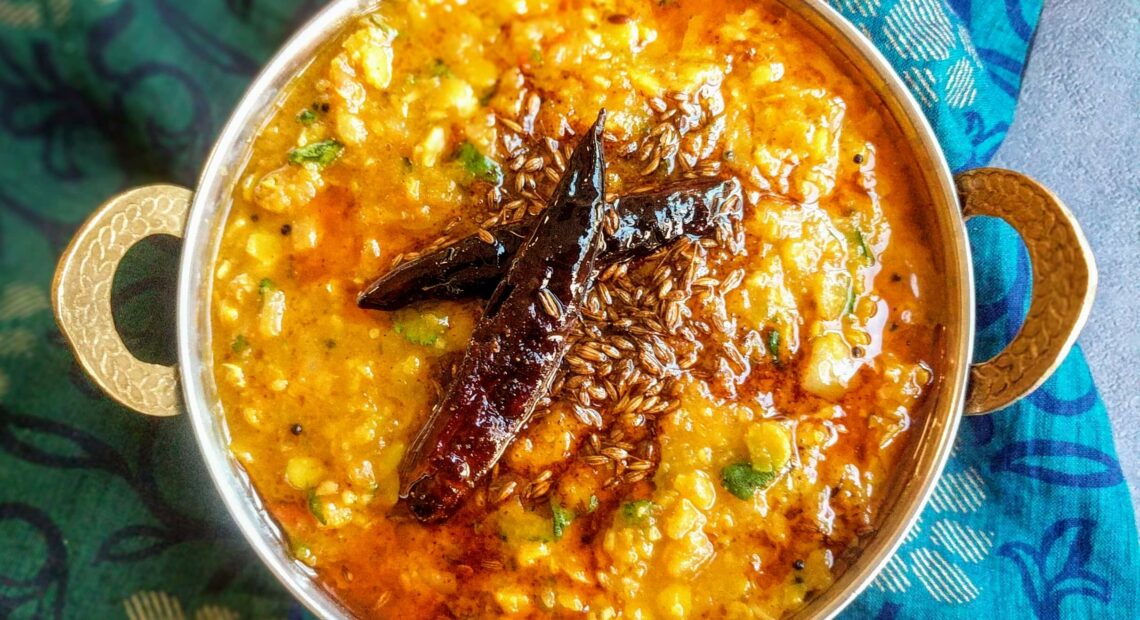The Essence of Tadka: Why it’s Essential in Indian Cooking

In the vast and diverse landscape of Indian cuisine, there’s one element that stands out for its transformative power and aromatic allure – tadka. This simple yet indispensable technique involves tempering spices in hot oil or ghee and adding them to various dishes during the cooking process. Let’s delve into why tadka holds such a pivotal role in Indian cooking and how it elevates the flavors of countless dishes.
A Burst of Flavor
Tadka, also known as tempering or seasoning, acts as a flavor booster in Indian cuisine. By infusing hot oil or ghee with a blend of spices such as cumin seeds, mustard seeds, curry leaves, cloves, cinnamon, and dried red chilies, it releases their essential oils and imparts a rich, aromatic flavor to the dish. The sizzling sound of spices hitting the hot oil is not just music to the ears but a prelude to a culinary symphony of flavors.
Depth and Complexity
One of the hallmarks of Indian cuisine is its depth of flavor, achieved through layering spices and ingredients. Tadka adds complexity to dishes by imparting a unique depth of flavor that comes from the careful balance of spices. Whether it’s the earthy notes of cumin, the pungency of mustard seeds, or the citrusy aroma of curry leaves, each component in tadka contributes to the overall taste profile, creating a harmonious blend of flavors.
Aromatherapy for the Palate
The aromatic allure of tadka is undeniable. As the spices sizzle in hot oil, they release their aromatic compounds, filling the kitchen with a tantalizing fragrance that awakens the senses. This olfactory delight not only enhances the eating experience but also plays a crucial role in stimulating appetite and anticipation.
Digestive Aid
Beyond its culinary prowess, tadka also offers digestive benefits. Many of the spices used in tadka, such as cumin, coriander, and mustard seeds, are known for their digestive properties. The process of tempering helps to unlock the medicinal benefits of these spices, aiding digestion and promoting gut health.
Versatility in Cooking
Tadka is incredibly versatile and can be adapted to suit a wide range of dishes, from dals and curries to rice dishes, vegetables, and even snacks. Depending on the regional cuisine and personal preferences, the combination of spices and the intensity of tadka can vary, allowing for endless experimentation and creativity in the kitchen.
Cultural Significance
Beyond its culinary significance, tadka holds cultural and symbolic importance in Indian cooking. It represents the artistry and craftsmanship of Indian cuisine, passed down through generations. Tadka is not just a cooking technique but a reflection of India’s rich culinary heritage and the diverse tapestry of flavors that define its gastronomic landscape.
In essence, tadka is the soul of Indian cooking, infusing dishes with flavor, depth, and aroma. From humble dals to elaborate curries, it’s the magic touch that elevates ordinary ingredients into extraordinary culinary delights. So the next time you savor a fragrant bowl of dal or a spicy curry, remember to pay homage to the humble tadka, for it is the secret ingredient that makes Indian cuisine truly unforgettable.
Picture Courtesy: Google/images are subject to copyright








